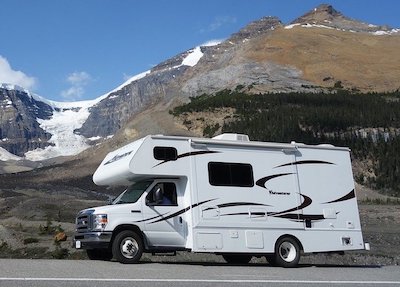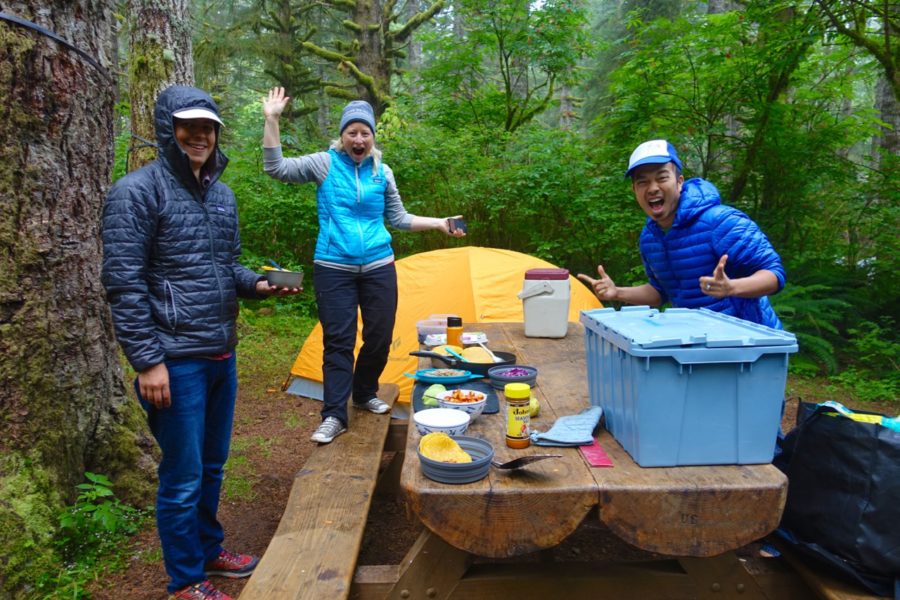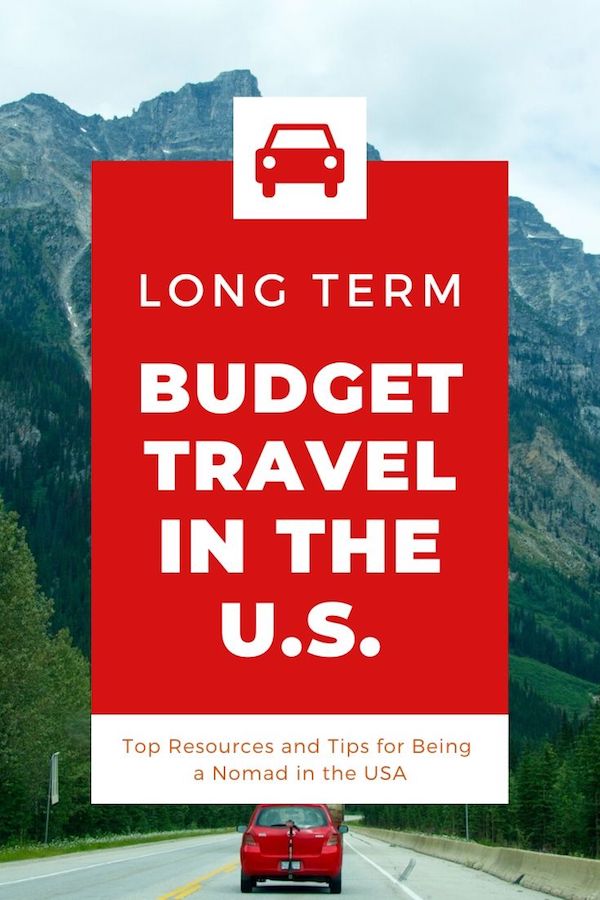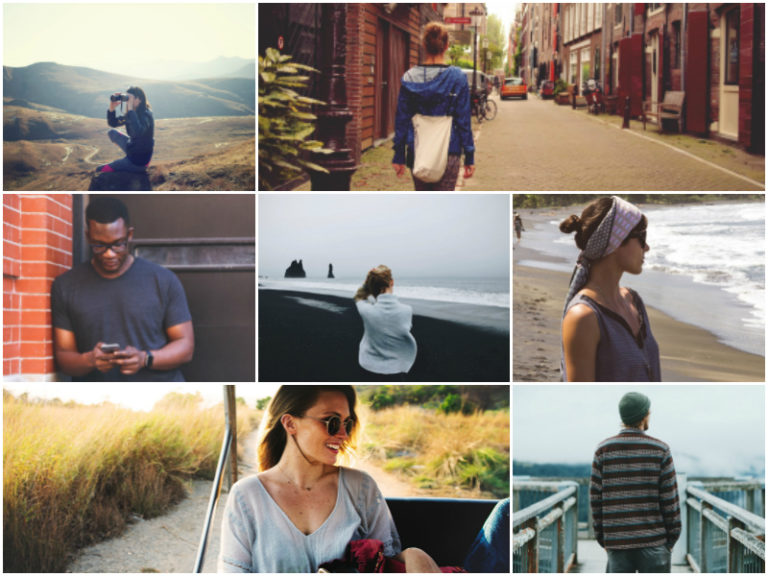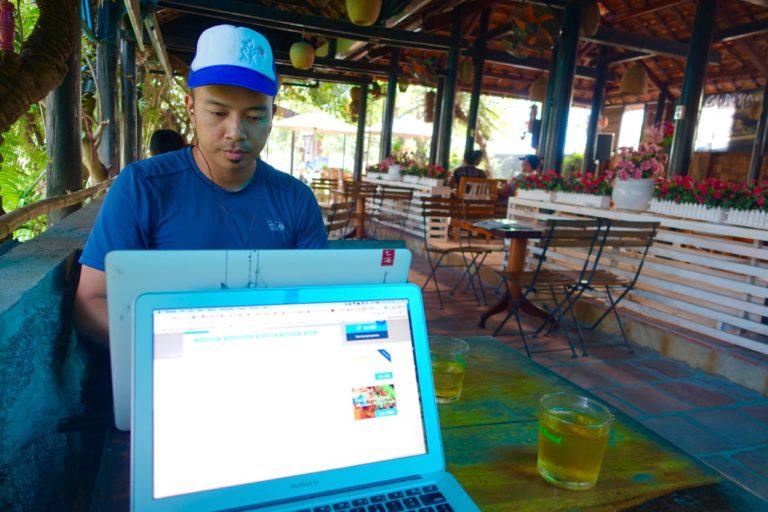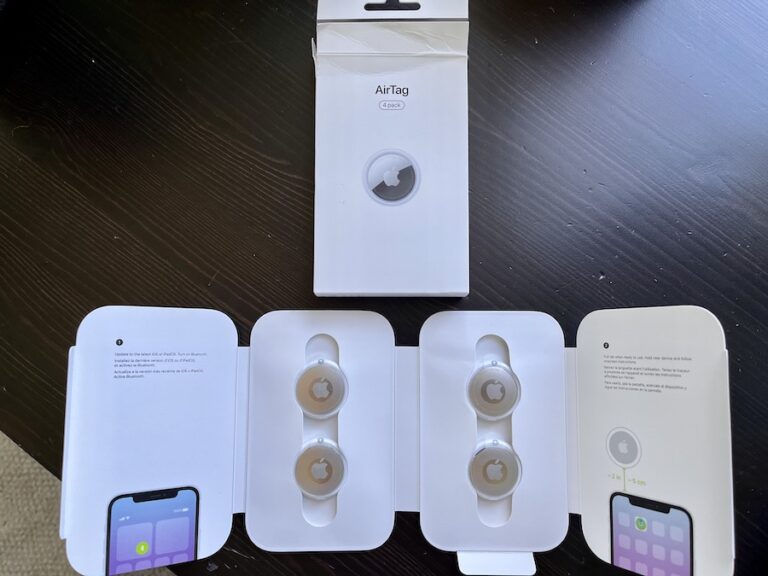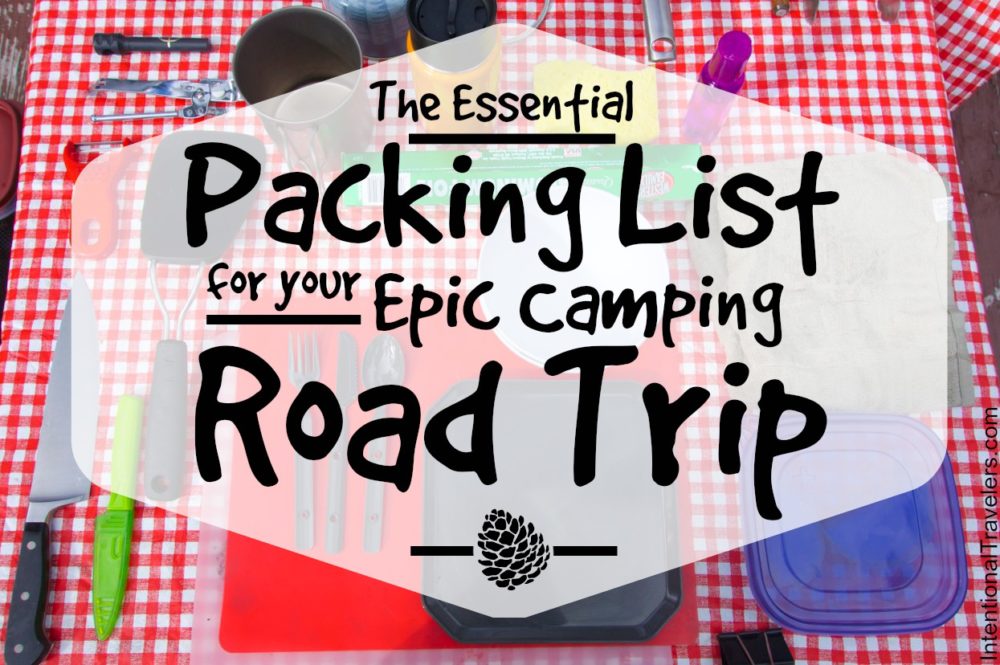Top Resources for Traveling Full-Time in the U.S.
Our digital nomad life usually leads Jedd and I abroad, but there are plenty of people who are traveling long-term or living nomadically in the US, too. Some folks, like our friends Heath and Alyssa (who helped us write this post), live and work from an RV full-time. Others combine camping, couchsurfing, and work exchanges to do long-term domestic travel on a budget.
This post came about because we received an e-mail from one of our readers, looking for tips and resources to help sustain her upcoming six month trip around the States. We figured this would be useful info for other travelers as well, so we’ve compiled the top resources we could find for traveling long-term in the USA. If you have something to add, please let us know in the comments at the end!
Updated: Summer 2020. Originally published: Summer 2016.
Table of Contents
Long-Term Budget Travel Resources for the U.S.
From the Blogosphere:
- The Essential Packing List for Your Epic Camping Road Trip
- How Much Does It Cost to Visit All 50 States?
- Why you should use Airbnb rentals when you travel
- Our National Parks Road Trip Itinerary
- One Month on the Road: Our Rockies Road Trip Itinerary
- Our Favorite Video Tours of Awesome RVs for Full-Time Tiny Living
Outdoorsy is like Airbnb for RVs. It’s where RV owners rent out their RVs when they’re not using them.
If you’ve always wanted to try out a motorhome, or want to upgrade your long-term USA road trip with a cute Airstream, consider renting through Outdoorsy. Their customer service and reviews have outranked the other top RV rental companies. You can search listings by vehicle type and location. Some owners will even deliver the motorhome to your door!
*Take $50 off your Outdoorsy rental with coupon code: intentional
Browse and book RVs, motorhomes, trailers, and campervans on Outdoorsy here
What to do about Health Insurance when traveling long-term
Healthcare.gov
Just like non-mobile Americans, one option if your income is not too high, is to use healthcare.gov to qualify for a discount on monthly healthcare premiums. When you select your healthcare plan, though, make sure you’ll be covered on the road and you understand the “out of area” coverage requirements. Not all plans will cover you when you’re out of state.
Telemedecine Savings Plan
A telemedecine savings plan gives you 24/7 access to physician and nurse consultations remotely as well as discounts on medications. Discounts on dental and hearing care can also be included in some plans. While this option does not replace your healthcare, it can be affordable way to get medical attention out of state. Plans start at $10 per month.
Healthshares
One alternative option for healthcare is a sharing ministry. Members of these groups pay in on a monthly basis and agree to assist other members with medical bills that arise. Monthly payments and deductibles are usually significantly lower than traditional healthcare, however, these programs come with other membership requirements. For more details check out Samaritan Ministries or Liberty HealthShare.
What is the best cell phone and data plan for USA travelers?
Even in the U.S., reliable and quick phone and data coverage is not always possible. If you plan to work online while traveling the States, free wifi hotspots may not cut it.
Our friend, Alyssa, says: “The only way to go for Internet on the road is Verizon. They by far have the best coverage and the best plans. Many full-timers use Verizon Unlimited data plans through a third party. The best place to start looking for internet solutions is with Chris & Cherie over at RV Mobile Internet.”
Check the Coverage? app to research whether your cell provider has coverage in your next stop, or to compare coverage areas of the major providers.
To track down free and paid public wifi anywhere in the world, try a Wifi Finder app. It can be used online or offline.
How to find free and cheap campsites in the U.S.
Federal Lands
In BLM (Bureau of Land Management) and U.S. Forest Service areas, you can camp for free within a certain distance of the roadside for up to 14 days. In RV communities, this practice is called dispersed camping or boondocking. Be prepared to rough it and practice “leave no trace behind.”
You can try the Public Lands app to find potential locations and the corresponding regulations for each area.
FreeCampsites.net
While not comprehensive, this site is a crowd-sourced map of free campsites around the nation.
Camp In My Garden
Here’s another option which doesn’t have a huge selection in the States, but can help you find cheap places to stay in peoples’ backyards. Facilities and pricing varies by homeowner.
Ultimate Campgrounds
This site provides an interactive map of public campgrounds in the U.S., though they’re not all free. They also have an app if you want the info on your smartphone.
Campendium
The Campendium site lets you search for specific campground types and includes free sites, National Parks, National Forests, State Parks, and RV parks.
Harvest Hosts
Another way to camp for (almost) free is with Harvest Hosts. HH partners with farms, distilleries, wineries, and breweries across the country that have extra land or space for campers. Participating places allow you to camp on their property for free–usually for only one night–in exchange for your business. So typically you have a free place to stay for the cost of a bottle or two of wine. This is a great option if you want to get to know the locals in every place you visit. A HH membership costs less than $50 a year.
Parking Lots
If you just need a quick, free place in town to sleep overnight in your vehicle, then pull over in a Walmart, Cabela’s, truck stop, or rest stops. Full-timer RVers recommend calling the store manager or local police to check that overnight camping is allowed.
Passport America
If you’re planning to spend a lot of time at campsites around the country, Passport America offers 50% camping fees at participating campgrounds. The yearly fee for the membership is $44, but if you camp at just two of their locations, you’ll make your money back.
Alyssa says, “Hands down, this has been our best investment for saving money on camping.” (Disclosure: the Passport America link above is an affiliate link.)
What is full-time RVing?
Full-time RVing, or being a “fulltimer,” simply means you sleep all of your nights in an RV. It’s your house, your only home.
How do you get your mail when you’re a nomad?
When you live full time in an RV, most people use a mail forwarding service.
There are three states that are awesome about this: South Dakota, Florida, and Texas. Before you start RVing, you’ll want a permanent address in one of these places. This usually means setting up a “domicile,” a.k.a. becoming a resident of another state so you can use their RVing benefits. All of these states have great options for mail forwarding programs.
If you’re thinking about becoming a fulltimer, you can read this Technomadia article to learn more about this fascinating concept of getting your mail on the road.
Back to full-time RVing.
Now that you know you can get your mail across the country, here’s a little more about what full-time RVing looks like.
When you’re a fulltimer, you can:
- Live anywhere you want (for Heath and Alyssa, this has included beachfront of the Pacific Ocean, riverfront, lakefront, mountainside, on a volcano, on farms, in national forests, even New York City!)
- Work from anywhere
- Not be tied down to mortgages, bills, and the monotony of staying one place
- Meet new people
- Spend more time in nature
- Save a ton of money
- Basically do anything you want all the time
“All this could be summed up very succinctly: Full-timing is the BEST,” says Alyssa.
Who full-time RVs?
Alyssa and Heath have met adults as young as 21 and as old as their 70s traveling full-time across the country. They’ve seen families with infants and teenagers and more kids than you could ever imagine, living in an RV with all their stuff piled into a trailer, traveling together.
Why Should I Full-Time RV?
One word: freedom.
In the past few decades, the world has changed in a million different ways. But the most overwhelming way is this: we have choices that society has never had before.
Your grocery store doesn’t offer great avocados? There’s probably five others equidistant from your house. You don’t like Shell gas stations? You have a hundred other options. Nothing good on TV? Don’t worry, there’s only millions of tv shows and movies you can watch on cable or satellite or the Internet. You don’t want to work from an office? You can work from home or a co-working space or Starbucks or a bar with wifi or an RV on the coast (Alyssa’s done all of these). We have more options every day than we know what to do with. Living in an RV and traveling full time is just one of them.
And yet, everyone is living in a home with four walls and indoor plumbing. Across the board, most people live in what RVers call a “sticks and bricks” home. Which is great if you’re worried about tornadoes or if you want a stable, predictable future. But it’s not great if you want to get out and see the world and learn and grow and be a better person (all of which are side effects of full time travel).
I know what you’re probably thinking now:
What about work? How would I finance full time travel?
Money is the biggest hurdle people face when it comes to leaping into the full time travel lifestyle.
Surprisingly, for Heath and Alyssa, full timing opened a lot of doors for their business. Since moving into an RV, they’ve visited all 50 states, filmed a documentary, been on live national and international television, filmed a tv show, written books, published a course, and filmed a bunch of gigs across the country.
How to Make Money on the Road
Heath Padgett’s Resources
Our friend Heath is leading the way when it comes to full-time RVing as a young adult. His Make Money and RV Facebook group and RV Entrepreneur Podcast are excellent resources, even if you aren’t living out of an RV.
Digital Nomads
Just about anyone who makes their living online in a location independent way can travel the U.S. long-term. Check out this blog post to learn more about Digital Nomad living.
Help Exchange, WWOOF, Work Away
These three network sites hook you up with hosts around the world – and in the States – who will provide you room and board in exchange for various kinds of labor. Organic farming, nannying, hospitality, or web services are just a few of the ways you can get your foot in the door and save a lot of money. Here’s one example where we did Help Exchange at a chateau B&B in France.
Work and Travel Jobs
We wrote a post all about finding jobs in amazing places. Many are international, but plenty of the resources can be used in the U.S. as well!
Other Tools for Travel in the U.S.
The State Lines app will let you know about the variations in state laws and regulations so you’re not surprised every time you cross a state border.
Do you have tools to add? Tell us about it in the comments below!

